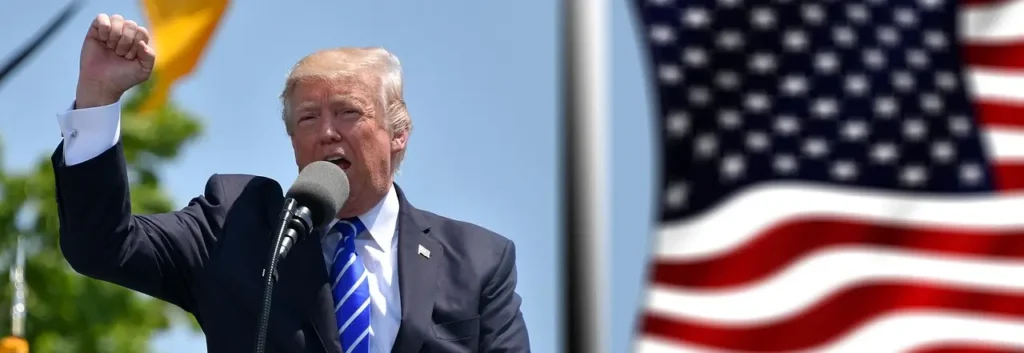How Trump Successes Compare To The Biden Failures
How Trump Successes Compare To The Biden Failures.
Comparing the Biden and Trump Administrations: A Critical Analysis
Table of Contents
How Trump Successes Compare To The Biden Failures
Introduction
- Brief overview of both administrations’ time in office.
- Explanation of the purpose of the analysis.
Negative Aspects of the Biden Administration

- Economic Policies X
- Inflation: The increase in inflation rates under Biden, discussing the contributing factors such as stimulus spending and supply chain disruptions.
- Energy Policies: Shutting down the Keystone XL Pipeline but gave the green light to Putin’s pipeline and its impact on jobs and energy independence.
- Corporate Taxes: Raising corporate tax rates and its potential effect on business investment and economic growth.
- Foreign Policy X
- Afghanistan Withdrawal: The chaotic withdrawal from Afghanistan and its consequences on global perception of U.S. strength.
- Relations with China: Perceived lack of a strong stance against China’s economic practices and human rights abuses.
- Iran Nuclear Deal: Re-engagement with the Iran Nuclear Deal and the criticism regarding its effectiveness and security implications.
- Domestic Policies X
- Border Crisis: Increased illegal immigration and border control challenges.
- Crime Rates: Rising crime rates in major cities and the administration’s lack of a response.
- Education Policies: Controversial stances on racist and fascist critical race theory and perverted gender identity in schools.
- Pandemic Response X
- Vaccine Mandates: The push for vaccine mandates and the backlash from various sectors.
- Handling of COVID-19 Variants: Criticism regarding the response to emerging variants and the balance between public health and economic activity.
Positive Aspects of the Trump Administration

- Economic Achievements
- Tax Cuts and Jobs Act: Reduction in corporate tax rates, tax relief for middle-income families, and the resulting economic growth.
- Deregulation: Cutting red tape and reducing regulations to spur business growth and innovation.
- Job Creation: Record low unemployment rates before the COVID-19 pandemic, especially among minority groups.
- Foreign Policy
- Middle East Peace Deals: The Abraham Accords and their significance in fostering peace in the Middle East.
- Trade Deals: Renegotiating NAFTA into the USMCA and its benefits for American workers and industries.
- Tough Stance on China: Implementing tariffs and challenging unfair trade practices.
- Domestic Policies
- Criminal Justice Reform: The First Step Act and its impact on prison reform and sentencing laws.
- Border Security: Strengthening border security and reducing illegal immigration through various measures including the border wall.
- Healthcare Initiatives: Efforts to reduce prescription drug prices and increase healthcare transparency.
- Pandemic Response
- Operation Warp Speed: Accelerating the development and distribution of COVID-19 vaccines for people that wanted it.
- Economic Stimulus: Relief packages to support businesses and individuals during the pandemic.
Comparative Analysis
- Economic Performance: Comparing GDP growth, unemployment rates, and business confidence under both administrations.
- Foreign Relations: Evaluating the global standing of the U.S., alliances, and international agreements.
- Domestic Stability: Assessing crime rates, immigration policies, and social issues.
- Pandemic Management: Contrasting the approaches to COVID-19, including public health measures and economic responses.
Conclusion
- Summarize the key points from the analysis.
- Reflect on the overall impact of each administration on America.
- Discuss the importance of evaluating policies based on evidence and outcomes.
Detailed Analysis
Negative Aspects of the Biden Administration
- Economic Policies
- Inflation: Under Biden, the U.S. experienced significant inflation, reaching levels not seen in decades. This was partially due to expansive fiscal policies, including large stimulus packages aimed at COVID-19 relief. While intended to support the economy, these measures contributed to increased demand and higher prices. The Federal Reserve’s subsequent interest rate hikes to combat inflation also led to concerns about potential economic slowdowns.
- Energy Policies: The cancellation of the Keystone XL Pipeline project was criticized for eliminating thousands of jobs and undermining energy independence. Critics argue that this decision increased reliance on foreign oil and contributed to higher energy prices.
- Corporate Taxes: The Biden administration’s proposal to raise corporate tax rates from 21% to 28% sparked debate. Proponents argued it was necessary to fund infrastructure and social programs, while opponents claimed it would deter business investment and lead to slower economic growth.
- Foreign Policy
- Afghanistan Withdrawal: The withdrawal from Afghanistan in August 2021 was widely criticized for its execution. The rapid takeover by the Taliban led to chaotic evacuations and questions about the U.S.’s commitment to its allies. This event damaged America’s credibility on the global stage.
- Relations with China: The administration’s approach to China has been perceived as less confrontational compared to Trump’s aggressive trade policies. Critics argue that this softer stance has allowed China to continue unfair trade practices and human rights violations without significant consequences.
- Iran Nuclear Deal: Re-engaging with the Iran Nuclear Deal, which Trump had exited, was contentious. Critics believe that the deal does not adequately prevent Iran from developing nuclear weapons and that lifting sanctions would enable Iran to fund terrorist activities.
- Domestic Policies
- Border Crisis: The Biden administration faced a surge in illegal immigration, with record numbers of migrants attempting to cross the southern border. Critics argue that the administration’s policies, such as halting border wall construction and reversing Trump-era immigration policies, exacerbated the crisis.
- Crime Rates: Major cities saw rising crime rates, particularly in violent crimes. The administration’s response was seen as insufficient by some, with debates about police funding and criminal justice policies intensifying.
- Education Policies: The promotion of critical race theory and gender identity policies in schools sparked controversy. Opponents argue that these policies are divisive and inappropriate for school curricula.
- Pandemic Response
- Vaccine Mandates: The implementation of vaccine mandates for federal employees and private businesses faced significant backlash. Critics viewed these mandates as government overreach, leading to legal challenges and public protests.
- Handling of COVID-19 Variants: The administration’s response to new COVID-19 variants was criticized for being inconsistent, with shifting guidelines and mandates creating confusion and frustration among the public.
Positive Aspects of the Trump Administration
- Economic Achievements
- Tax Cuts and Jobs Act: The 2017 tax reform significantly lowered corporate tax rates and provided tax relief for individuals, spurring economic growth and increasing business investments. The unemployment rate reached historic lows, benefiting a wide range of demographic groups.
- Deregulation: The Trump administration’s efforts to cut regulations aimed at reducing the burden on businesses, promoting innovation, and enhancing competitiveness. This included rolling back environmental regulations, which, while controversial, were seen as beneficial for economic growth.
- Job Creation: The pre-pandemic economy saw record job creation, with significant gains for minorities and women. The administration credited its policies for fostering a robust job market.
- Foreign Policy
- Middle East Peace Deals: The Abraham Accords, brokered by the Trump administration, normalized relations between Israel and several Arab nations, a significant diplomatic achievement aimed at fostering regional stability.
- Trade Deals: The renegotiation of NAFTA into the USMCA aimed to create a fairer trade environment for American workers and industries. The administration also implemented tariffs on Chinese goods to address trade imbalances and intellectual property theft.
- Tough Stance on China: Trump’s aggressive approach towards China, including tariffs and sanctions, was intended to protect American jobs and intellectual property. While controversial, it signaled a strong stance against unfair trade practices.
- Domestic Policies
- Criminal Justice Reform: The First Step Act, signed into law by Trump, aimed to reform sentencing laws and improve prison conditions. It received bipartisan support and was seen as a significant step towards criminal justice reform.
- Border Security: The administration’s focus on border security included constructing the border wall and implementing strict immigration policies. Supporters argue these measures reduced illegal immigration and enhanced national security.
- Healthcare Initiatives: Efforts to reduce prescription drug prices and increase transparency in healthcare pricing were aimed at making healthcare more affordable for Americans.
- Pandemic Response
- Operation Warp Speed: The rapid development and distribution of COVID-19 vaccines under Operation Warp Speed were significant achievements. The initiative aimed to accelerate the timeline for vaccine availability, contributing to the fight against the pandemic.
- Economic Stimulus: Relief packages, including direct payments to individuals and support for businesses, aimed to mitigate the economic impact of the pandemic. These measures provided crucial support during a time of unprecedented economic disruption.
Comparative Analysis
- Economic Performance: Under Trump, the pre-pandemic economy experienced strong growth, low unemployment, and high business confidence, driven by tax cuts and deregulation. In contrast, Biden’s term has been marked by higher inflation and economic uncertainty, despite efforts to support recovery through stimulus spending.
- Foreign Relations: Trump’s administration took a hardline approach, emphasizing “America First” policies and renegotiating trade deals. Biden’s approach has been more multilateral, focusing on rebuilding alliances but facing criticism over handling specific crises like Afghanistan.
- Domestic Stability: The Trump administration emphasized law and order, while Biden’s administration has faced challenges with rising crime rates and border security issues. Social issues, such as education policies and public health mandates, have also been points of contention.
- Pandemic Management: Both administrations faced unprecedented challenges. Trump’s Operation Warp Speed accelerated vaccine development, while Biden’s administration focused on vaccine distribution and mandates. Public reception and effectiveness of their responses have varied.
Conclusion
- Summarize the key points from the analysis.
- Reflect on the overall impact of each administration on America.
- Discuss the importance of evaluating policies based on evidence and outcomes, acknowledging that both administrations faced unique challenges and made decisions with far-reaching implications.
This analysis aims to provide a balanced view, acknowledging the complexities and varying perspectives on the policies and actions of both administrations. No matter who the democrats put in office, their agendas will continue to destroy America.




